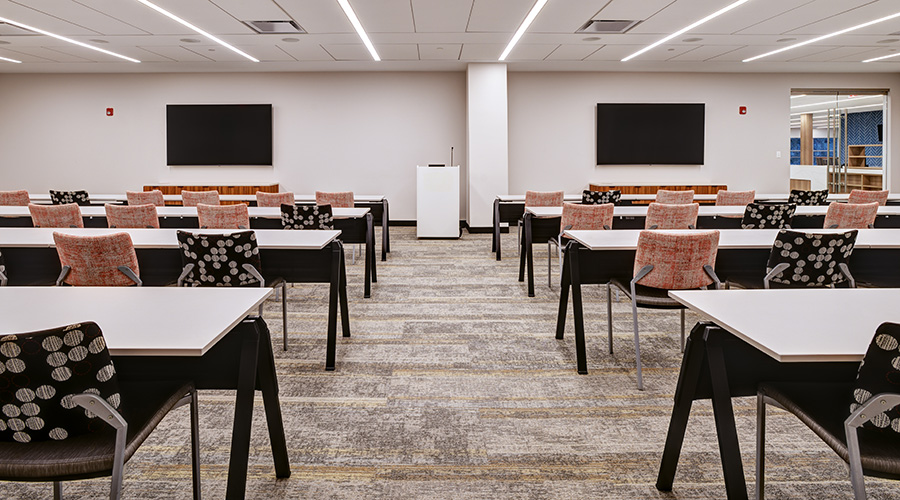Sound Strategies for Open Offices
Because different groups will have different work styles and acoustics needs, it makes sense to pair like with like as much as possible, says Janet Pogue McLaurin, principal with Gensler. "Zone noisy things together and quiet things together, and do not intermix them so that it creates a noisy environment overall," she says. "You don't want to design it so that it's so quiet you can hear a pin drop, but you don't want to have a noisy environment where people can't focus either."
Providing a mix of work zones can help alleviate some of the acoustics concerns in open office. For example, collaboration space might fit well in the more open part of the office, but elsewhere there might be small huddle rooms for heads down work or to have a confidential conversation.
A tool often used to provide speech privacy in open office design is electronic sound masking. However, Papadimos cautions that this tool should be used judiciously and in concert with other strategies. "Sound masking as a concept and as a solution is valuable, but it also has limitations," says Papadimos. A lot of times, specifications are poorly written and often times proper commissioning and tuning of the system doesn't take place, he says. "It has to be balanced and properly tuned spectrally and properly maintained," he says.
In addition, when considering use of sound masking systems facility managers have to also be aware of how the building ventilation systems are contributing to the acoustical environment in a space. With variable load systems, the noise levels from the operation of the ventilation systems also tend to fluctuate depending on occupancy, time of day, weather conditions etc, and this needs to be taken into account when designing an electronic sound masking system otherwise it may result in a space that could be too quiet or too loud, Papadimos says.
Other strategies available for improving acoustics in an open office are adding soft finishes that will absorb some of the sound. How partitions are used and work station layout also come into play.
Something facility managers should keep in mind if facility occupants are complaining that an open office space is too loud is that it might not actually be volume that is the issue. The root of the issue could instead be interruptions and distractions, not that it's too noisy. "It's not unique to open office," says Katie Mesia, senior associate, Gensler. "But in an open office, you are also aware of those interruptions happening with a colleague."
That is to say, not only do office occupants not have a door to shut on the rest of the office when they need heads down time, but they also can't help but notice when their office mate, who might be sitting mere feet away in a benching environment, is receiving a steady stream of visitors as well. In that scenario, providing a variety of work zones comes to the rescue, as the beleaguered employee can disappear into a quiet space, instead of showing up in the facility manager's office — or four linear feet of bench, as the case may be — to grumble.
Email comments and questions to naomi.millan@tradepress.com.
Related Topics:












